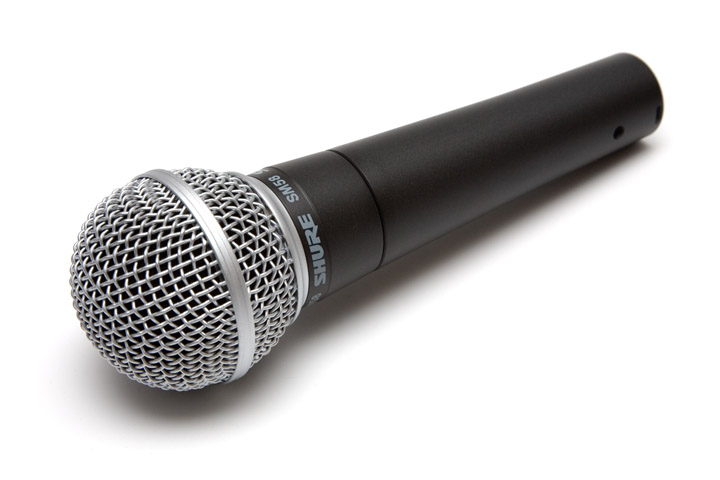A (Very) Short History
Ever since its inception in 1965, the Shure SM57 has gone from strength to strength. Its enduring popularity is a testament to its high-quality design and rugged construction. This mic remains the go-to dynamic microphone for professionals and enthusiasts 55 years on. You can’t even overstate its importance or impact either; it’s so ubiquitous in fact, that it’s now regarded as the worlds most popular and widely adopted dynamic microphone ever produced. From live sound for the biggest shows, to the recording process on countless classic records, the Shure SM57 has played a part.

You can trace the ideas that formed the basis of the mic back even further too – all the way to the late 1930’s. Benjamin Bauer (one of Shure’s engineering eggheads) pioneered the very first directional, single-element dynamic microphone. This mic featured a cardioid polar pattern (just like the SM57) and was dubbed the ‘Unidyne’. Fast forward to 1959 and Ernie Seeler – one of the brands’ later engineers – built on the foundations of Benjamin’s work with the introduction of the Unidyne III. The mic went through a three year period of intensive and extensive research, testing and development. This cutting-edge creation would eventually morph into the SM (studio microphone) range that we know today – spawning the SM57 and its cousin, the SM58, in the mid ’60s.
Fun Fact: the SM57 has been the main lectern mic of the White House communications team since 1966 – meaning every US president from Lyndon B. Johnson and Ronald Reagan, to Barack Obama and Donald Trump has used one.
What Separates the SM57 from the Competition?
Durable Build
The SM57 is basically indestructible; if you manage to actually break one, then it’s almost an achievement. That’s how durable these microphones are. This rock-solid construction has been a hallmark of Shure’s products since the Second World War, where the brand was brought onboard as a contractor for the United States armed forces. Their gear had to be manufactured to military-grade requirements, meaning it could withstand the trials and tribulations of the field with absolute ease. Shure continued this production process post-war as it reduced repair and maintenance costs, while simultaneously improving customer satisfaction. They’ve solidified their standing as one of the most reliable and rugged mic manufacturers ever since.
This means that the modern-day rigours of the road are no issue for the SM57. From extended world tours by heavyweight artists, to your local pub band, the mic will have no trouble performing after years of extended use. It can take a direct hit from a drumstick and will shake off knocks, bumps and falls without any detrimental impact to it whatsoever. People have got even more extreme with their testing too. From running it over with a truck, to dunking it in water and dropping it from a building, the mic has withstood these tests – working with no issues afterwards in each of these situations too. There’s a reason why it’s been nicknamed the ‘workhorse’.
Climate Control
The SM57’s longevity even extends to its response to changes in your environment, be it high or low temperatures, or long periods of humidity. These conditions will usually cause your mic to crackle, hiss, or pop, and can even alter transient/frequency response, but with this mic, that’s not even an issue.
A small amount of moving parts means the mic is less likely to fail on you – especially when compared with a condenser, which contains many more sensitive, individual parts. Condenser characteristics can sometimes change as the microphone ages too. Dynamic mic’s like this though are a lot more stable and maintain their sound better over a longer period of time.
Sonic Versatility
You can pretty much use the SM57 to mic up any kind of source. Whether it’s drums, brass, acoustic guitar, woodwind, or a guitar amp, the mic will provide you with great performance and a bright sound quality. Some vocalists even use it ahead of its SM58 counterpart! This versatility is partly due to its effective cardioid polar pattern. It manages to highlight and isolate your instrument or voice clearly from the front in excellent detail, while reducing unwanted background noise. You’ll find this directionality makes it ideal for both capturing sources live (as it minimises bleed from other sounds onstage/is highly resistant to feedback) and in the studio.
The SM57 is augmented further by a well-shaped frequency response – ensuring clean, crisp audio – and an integrated shock mount which reduces the amount of handling noise.









Responses & Questions